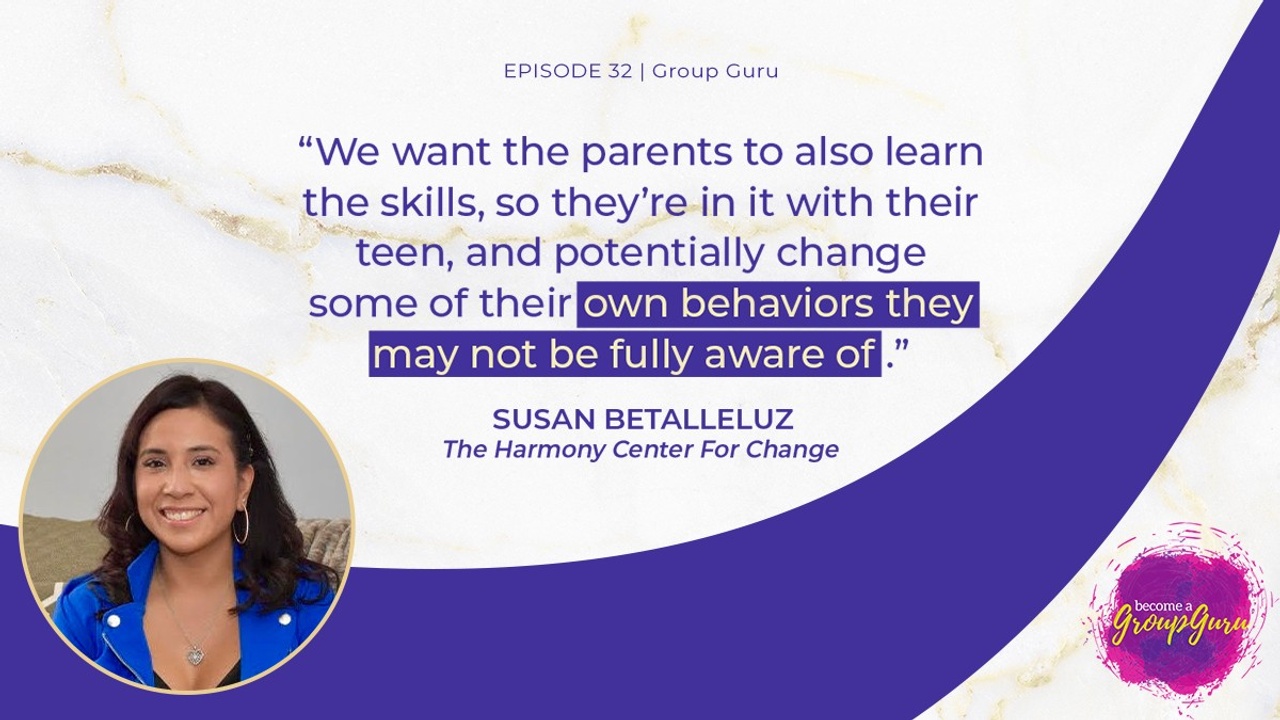Episode 32 | Multi-Family DBT Groups with Parents and Teens

The Group Work Podcast. Find out what happens in the space where group therapy takes place.
Listen and subscribe on Apple Podcasts here
Listen and subscribe on Spotify here
Summary
Susan Betalleluz joins Katie to share her experience running DBT multifamily groups with parents and their teens. They discuss the importance of securing their clients’ commitment to applying what they are learning during DBT, why multifamily groups can be eye opening for parents, and how to ease client anxiety about committing to such a comprehensive program.
Susan Betalleluz is the founder and clinical director of The Harmony Center for Change. She is a Licensed Clinical Social Worker and has completed her Intensive DBT Training.
Timestamps
[00:00] Who is Susan Betalleluz (The Harmony Center)?
[04:44] What is a multifamily group?
[05:54] Who is a multifamily group ideal for?
[06:45] The commitment process of DBT groups (the uniqueness of DBT groups).
[09:22] What is the experience in a multifamily DBT group like?
[11:17] The importance of teaching clients to trust their gut feeling.
[12:48] What parents are surprised to hear from their teens in a multifamily group.
[15:09] Why Susan keeps her group always open.
[16:56] Why having two facilitators in a multifamily group is so helpful.
[18:33] Who is NOT a good fit for a DBT group?
[20:30] How willing and cooperative are parents and teens in a multifamily group?
[21:40] The main challenge of running a multifamily DBT group.
[24:28] Advice for new therapists who want to start a multifamily DBT group.
[26:41] How to reach Susan.
4 Key Takeaways
- A multifamily DBT group is a group where you are bringing the parents/caregivers and the teens together. These groups are ideal for teens who are struggling and may be prone to self harm, and their caregivers who may be having a hard time understanding why their teen is sensitive.
- When running therapy groups with vulnerable clients, it can be very valuable to teach them to trust their gut feeling and therefore tap into their inner wisdom.
- Assessing the willingness of the client to commit to the work required of being in a DBT group is vital to a DBT group’s success and harmony. Once members are admitted in your group, always check in to see if anyone is having trouble applying and connecting with what they are learning. It can help to also ask for feedback to see what you can adjust to make the experience more useful for them.
- A vital part of securing DBT group members’ commitment to the comprehensive DBT program is to take time to explain why DBT works and the research behind it.
Tools & Resources
Connect with Susan Betalleluz: Website | Email
Workbook mentioned: DBT Skills Manual for Adolescents by Jill H. Rathus and Alec L. Miller
Fill Your Group FAST!
Your action steps and accountability for filling groups FAST, even if you hate marketing and have no idea where to start.
